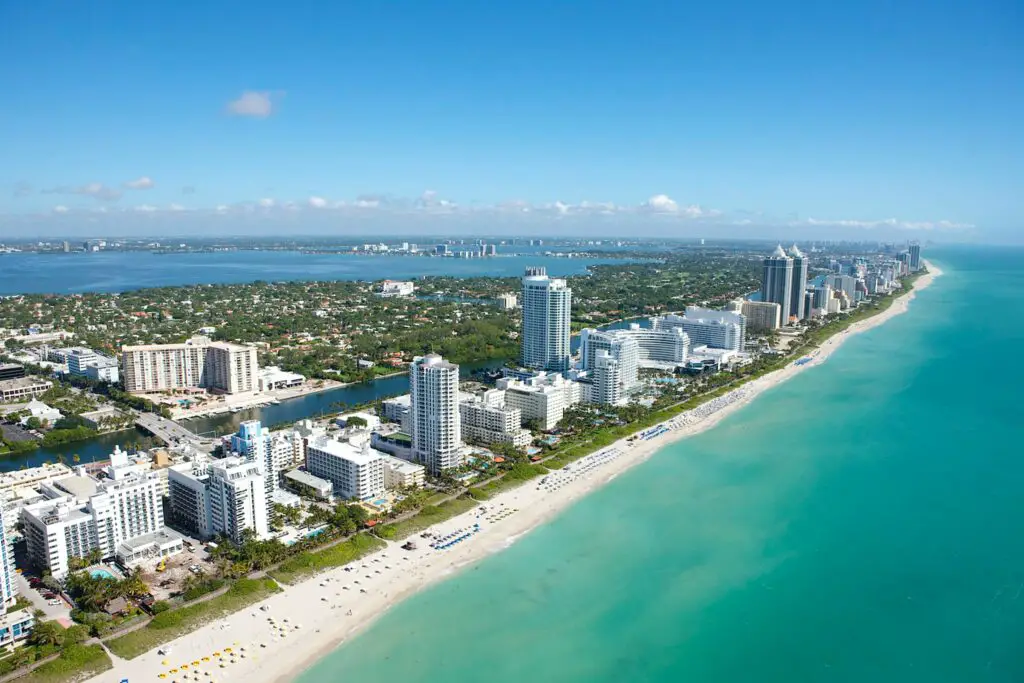Miami is not currently below sea level, but it is a city that is particularly vulnerable to the impacts of sea level rise. This vulnerability is due to a combination of factors, including its location, geology, and urban development patterns.

Miami is located on the southeastern coast of Florida, on a low-lying peninsula that is surrounded by water on three sides. This location puts the city at risk from the impacts of sea level rise, as well as from storm surge and flooding events. In addition, Miami sits atop a porous limestone bedrock that allows water to flow freely underneath the city, making it more susceptible to flooding and subsidence.
The threat of sea level rise in Miami is not a new one. Scientists have been studying the impacts of rising sea levels on the city for decades, and there is now a growing consensus that the problem is only going to get worse. According to a report from the National Oceanic and Atmospheric Administration (NOAA), sea levels in Miami have already risen by about 9 inches since the early 20th century, and they are expected to rise by another 3 to 7 inches by 2030.
The impacts of rising sea levels on Miami are numerous and varied. One of the most immediate concerns is flooding. As sea levels rise, storm surges and high tides can cause water to inundate low-lying areas of the city. This can damage buildings and infrastructure, disrupt transportation, and contaminate water supplies. In addition, as the water table rises, it can cause saltwater to intrude into freshwater aquifers, which can make it harder and more expensive to provide clean drinking water to the city’s residents.
Another concern is the erosion of beaches and coastal areas. As sea levels rise, waves and currents can cause beaches to erode and shoreline to retreat. This can lead to the loss of valuable coastal property, damage to infrastructure, and increased vulnerability to storm surge and flooding.
In addition to these immediate impacts, rising sea levels can also have longer-term effects on Miami’s infrastructure and economy. For example, as flooding becomes more frequent and severe, it can damage roads, bridges, and other critical infrastructure, making it harder and more expensive to maintain and repair. In addition, businesses and residents may be forced to relocate if their properties become too vulnerable to flooding, which can have a ripple effect on the city’s economy.
Despite these challenges, there are also opportunities for Miami to adapt and become more resilient in the face of sea level rise. For example, the city has implemented a number of measures to reduce its vulnerability to flooding and storm surge, such as building sea walls, elevating roads and buildings, and improving drainage systems. In addition, there are ongoing efforts to restore wetlands and other natural systems that can help absorb storm surge and protect against flooding.
Overall, while Miami is not currently below sea level, it is a city that is highly vulnerable to the impacts of sea level rise. As climate change continues to drive up sea levels and increase the frequency and severity of storms and flooding events, it is important for Miami and other coastal cities to take action to become more resilient and adapt to these changing conditions. This will require a combination of infrastructure investments, policy changes, and community engagement to ensure that the city can continue to thrive in the face of these challenges.